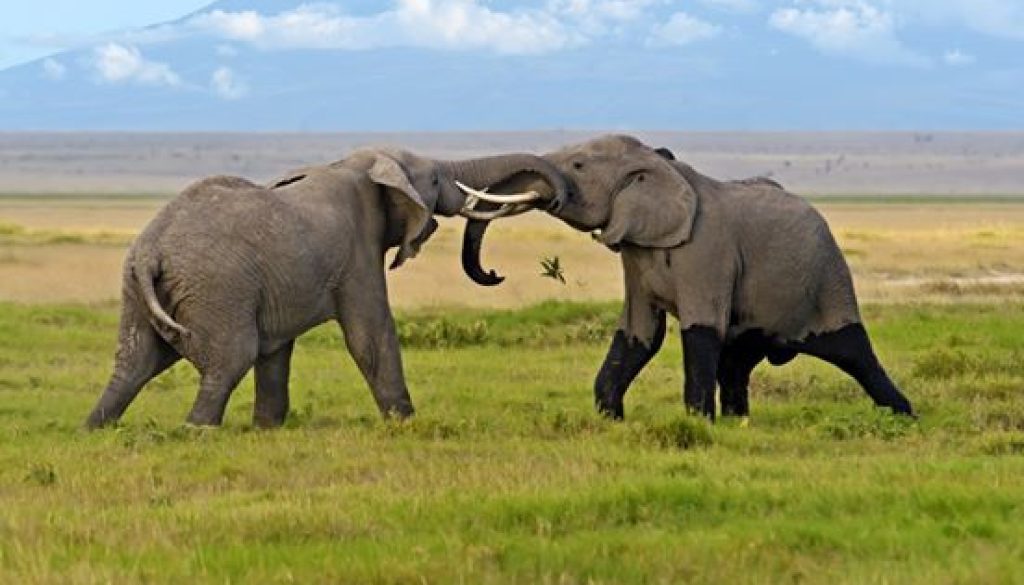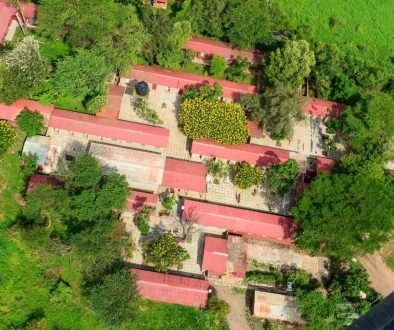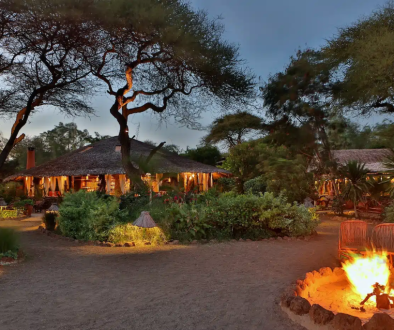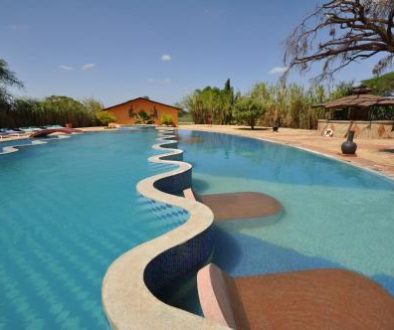Is Amboseli National Park Worth Visiting
Is Amboseli National Park Worth Visiting
Is Amboseli National Park worth visiting? Absolutely. With its spectacular landscapes, abundant wildlife, and rich history, Amboseli offers a unique safari experience that sets it apart from other Kenyan parks.
The History and Administration of Amboseli National Park
Amboseli’s history is intertwined with the Maasai people. The area was initially set aside as the Southern Reserve for the Maasai in 1906. In 1948, it was returned to local control as a game reserve, and finally, in 1974, it was gazetted as a national park. This recognition was further solidified in 1991 when Amboseli was designated a UNESCO site due to its ecological importance.
The Kenya Wildlife Service (KWS) currently administers Amboseli National Park, overseeing its conservation and management efforts. A 2005 proposal to transfer control to the local council and the Maasai tribe sparked controversy and legal challenges, highlighting the delicate balance between conservation and community interests.
Amboseli National Park Location and Accessibility
Situated about 240 km southeast of Nairobi, near the Tanzanian border, Amboseli’s location makes it readily accessible for travelers. The park is nestled in the foothills of Mount Kilimanjaro, offering a stunning backdrop for wildlife viewing.
How to Get To Amboseli National Park
- Nairobi-Mombasa Road: The main access route, suitable for travelers from both Nairobi and Mombasa.
- Namanga Route: A quicker option from Nairobi, entering through the Meshanani Gate.
- Kimana in Olkelunyiet Gate: Ideal for those coming from Mombasa.
- Emali Route: Another alternative from Nairobi.
- Train: Accommodations often provide pickup services from the nearby Emali train station.
Amboseli National Park Park Fees and Entry Guidelines
- Non-Residents: $60 per adult, $35 per child
- Kenyan Citizens: 860 KSH per adult, 215 KSH per child
- Kenyan Residents: 1,030 KSH per adult, 515 KSH per child
- Payment Options: MPESA, VISA Card, direct deposits, or at the park gate
- Pre-Payment: Not necessary for self-organized tours
- Smartcards: Accepted for entrance to five major parks, including Amboseli
Amboseli National Park Unique Geography and Climate
Amboseli National Park boasts diverse habitats, including open plains, fever tree stands, thorn-bush, swamps, and marshes, all set against the magnificent backdrop of Mount Kilimanjaro. The park’s underground water supply, filtered through volcanic rock from Kilimanjaro’s ice cap, creates two clear water springs, attracting a wealth of wildlife.
The climate is generally pleasant, with average daytime temperatures around 28°C and nighttime temperatures rarely dropping below 15°C. However, Amboseli experiences alternating periods of flood and drought, impacting its landscape and wildlife.
Best Times to Visit for Wildlife Sightings
The dry seasons, from June to October and January to February, are the prime times to visit Amboseli. During these periods, animals congregate around the remaining water sources, increasing your chances of spotting them. The months of July to December and December to March are particularly favorable due to short grasses and abundant food for the animals.
The Iconic African Elephants
Amboseli is renowned for its large population of African elephants, estimated at around 1,600 individuals. These elephants are not only numerous but also some of the largest in the world, known for their impressive tusks. Witnessing these majestic creatures against the backdrop of Mount Kilimanjaro is an unforgettable experience.
Other Wildlife You Might Encounter in Amboseli National Park
Amboseli’s diverse habitats support a wide range of wildlife. You might encounter lions, cheetahs, African buffalo, impala, giraffes, and various bird species. The dry season offers particularly good opportunities for wildlife viewing, as animals gather near water sources.
Scenic Views and Landscape Features
Amboseli’s landscapes are as captivating as its wildlife. The park features wetlands, savannah, and woodlands, providing endless photo opportunities. An observation hill offers panoramic views of the park, including Lake Amboseli. The varied terrain and the iconic backdrop of Mount Kilimanjaro create a truly breathtaking setting.
Mount Kilimanjaro: A Prominent Backdrop
Africa’s highest mountain, Mount Kilimanjaro, dominates the Amboseli skyline. Although visibility can be affected by dust, smoke, or clouds, catching a glimpse of its snow-capped peak is a highlight of any visit.
Varied Ecosystems Around the Park
Amboseli’s mix of habitats, including open plains, fever tree stands, thorn-bush, swamps, and marshes, supports a rich diversity of wildlife. The dry lake bed, Lake Amboseli, and the lush green swamps fed by Kilimanjaro’s meltwaters are central to the park’s ecology.
Pros of Visiting Amboseli National Park
- Large elephant herds: A unique wildlife viewing experience
- Breathtaking views of Mount Kilimanjaro
- Relatively small size: Easy to navigate and offers excellent wildlife sightings
- Open year-round: Flexible travel planning
- Less crowded than other parks: A more intimate safari experience
Cons of Visiting Amboseli National Park
- Higher entrance fees
- Relatively small size: May limit exploration time
- No rhinos: Not ideal for those seeking the Big Five
- Similar attractions to other parks: May be skipped if visiting multiple parks
- Limited ranger oversight: Potentially less immersive than larger parks
Accommodations: Where to Stay in Amboseli National Park
Amboseli offers a range of accommodations, from luxury lodges to budget campsites. Inside the park, you’ll find options like Tortilis Camp, Satao Elerai Camp, and Kibo Safari Camp. KWS also manages self-catering units. Nearby towns offer additional choices, and some lodges have private airstrips for convenient access.
Essential Tips for Planning Your Visit
- Park Hours: Open daily from 6:00 am to 7:00 pm
- Best Time to Visit: Dry season (July to October)
- Itinerary: Consider a 3-day, 2-night trip
- What to Pack: Essentials for hot and cool weather, binoculars, camera, picnic, comfortable shoes, safari gear
- Safety: Amboseli is generally safe, but follow park regulations and exercise caution around wildlife
Amboseli National Park is a remarkable destination that offers a unique blend of wildlife viewing, scenic beauty, and cultural experiences. While it may have a few drawbacks, its pros far outweigh its cons. If you’re seeking an unforgettable safari adventure, Amboseli is definitely worth visiting.
Lodges and Camps Inside Amboseli National Park
You’ll find a variety of options within the park itself, from luxury lodges like Tortilis Camp and Amboseli Serena to more budget-friendly choices such as Amboseli Eco Camp and Kibo Safari Camp. The Kenya Wildlife Service (KWS) also manages public and special campsites, including self-catering units at Kilimanjaro Guest House, Simba Cottages, and Chui Cottages. Private lodges cater to different budgets, offering a mix of luxury and affordability. For a unique cultural experience, consider Maasai Simba Camp, which incorporates Maasai traditions and supports the local community. With limited accommodation options in the park, it’s advisable to book early, especially during peak season.
Options in Nearby Towns
If you prefer to stay outside the park, nearby towns offer additional choices. Amboseli’s proximity to Nairobi (a three-hour drive or train ride to Emali station) makes it convenient to find accommodation in the city and travel to the park for day trips. Several lodges within the park have private airstrips, providing convenient access for those flying in.
Essential Tips for Planning Your Visit
- Park Hours: Amboseli is open year-round from 6:00 am to 7:00 pm, allowing for flexible planning.
- Best Time to Visit: The dry season (July to October) offers optimal wildlife viewing due to minimal rainfall and concentrated animal activity around water sources.
- Itinerary: A 3-day, 2-night itinerary is recommended to fully explore the park and its diverse wildlife.
- Weather: Pack for both hot and cool weather, as temperatures can fluctuate, especially near Mount Kilimanjaro. Bring a warm jacket or sweater for early mornings and evenings.
- Activities: Don’t miss the opportunity for game drives, birdwatching (best during the rainy seasons), and cultural visits to Maasai villages.
What to Pack
- Clothing: Pack for both warm and cool weather, including comfortable walking shoes for village visits and safari gear for sun protection.
- Gear: Binoculars and a good camera are essential for wildlife viewing and photography.
- Other: Consider packing a picnic for scenic stops and any personal essentials.
Safety Considerations
- Park Management: Amboseli is managed by the Kenya Wildlife Service (KWS), ensuring a level of safety and oversight.
- Accessibility: The park is easily accessible by air or road, with an airstrip for light aircraft.
- Proximity to Nairobi: Amboseli’s location near Nairobi offers easier access for travelers concerned about long-distance travel.
- Well-Maintained: The park’s smaller size allows for close monitoring of wildlife and visitor safety.
- Wildlife Encounters: While Amboseli offers close encounters with wildlife, it’s crucial to follow park regulations and exercise caution, especially around elephants.
Conclusion
Amboseli National Park is a truly exceptional destination that promises an unforgettable safari experience. Its combination of stunning landscapes, abundant wildlife, and rich cultural heritage makes it a must-visit for any traveler seeking an authentic African adventure. With careful planning and consideration of the tips and information provided, you can ensure a safe and rewarding journey to this remarkable park.







